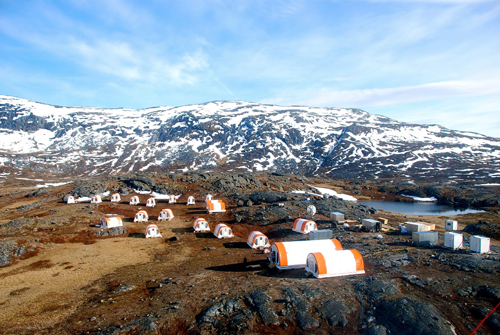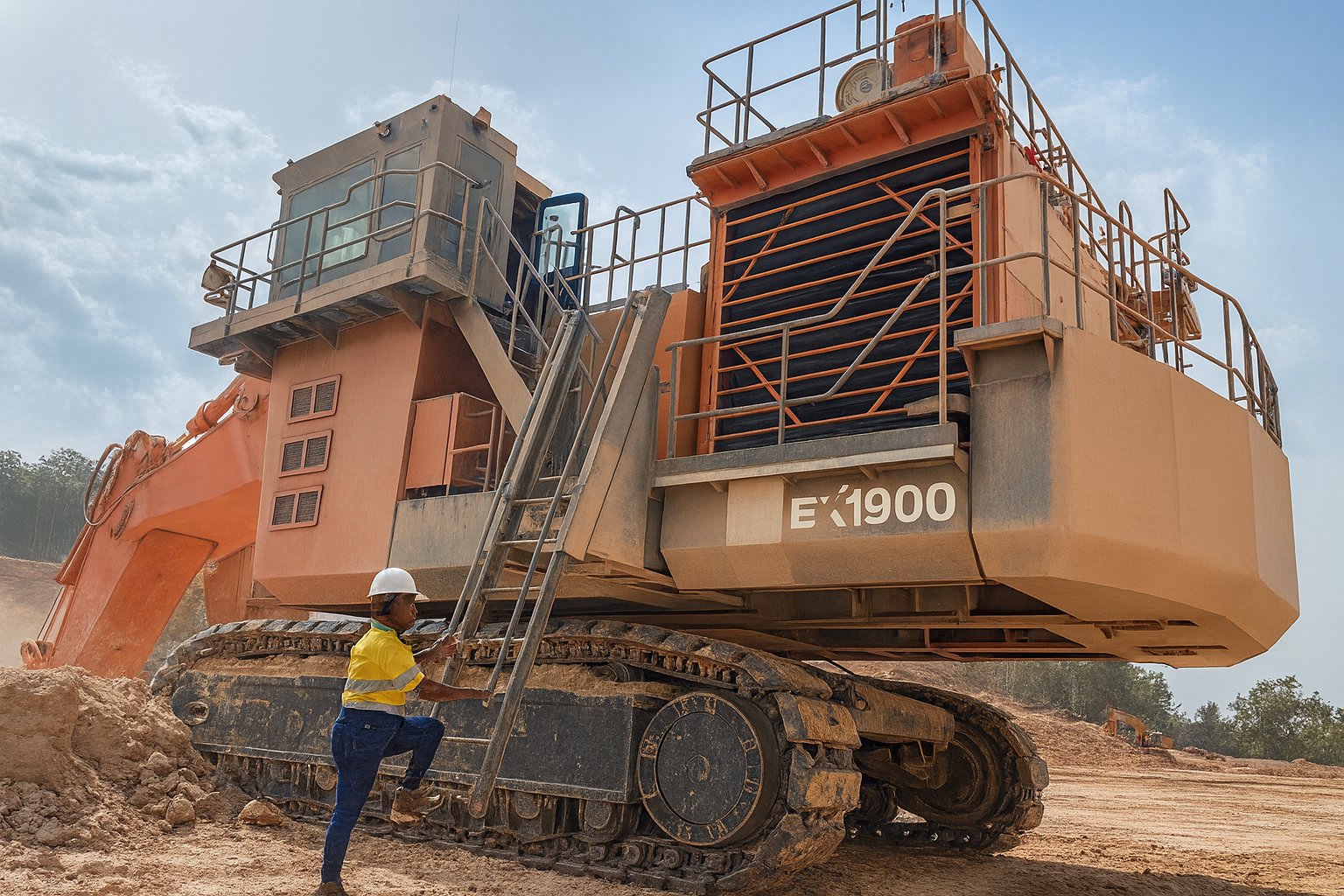
Nickel may be one of the most common elements in the earth's crust but that does not mean that it is the most accessible. Unlike some metal commodities, the global supply of nickel is concentrated in a handful of regions of the world. According to the US Geological Survey, in 2011 Russia was the world’s largest producer of nickel followed by Canada, Australia, Indonesia and the Philippines. It is generally believed that 'major igneous events' cause this otherwise inaccessible element to appear close to the earth’s surface – well igneous events don't come much larger than the 20 mile diameter meteor that smacked into Greenland three billion years ago, tearing open a crater some 60 miles wide. It's the oldest and biggest meteor impact identified on earth so far and its discovery in June 2012 by researchers from the Geological Survey of Denmark and Greenland (GEUS) may help to explain the abundance of nickel in the Maniitsoq area 100 miles to the north west of Nuuk.
When the meteor hit Maniitsoq, it caused nickel-rich magma from the earth's mantle to flow up into its crust. These nickel-rich magmas are preserved as the Greenland Norite Belt, which is the focus of North American Nickel's exploration programme. On August 15, 2011 the company was granted an exploration license by the Bureau of Minerals and Petroleum of Greenland (formerly BMP, now the Mineral Licence and Safety Authority or MLSA). This gave the company exclusive exploration rights over an area totalling nearly 5,000 square kilometres located near Sulussugut. As Dr Mark Fedikow, NAN's President and Interim CEO explains this was a massive area, and it was important to reduce it to a more manageable size once the most productive areas for drilling had been identified by helicopter-borne surveying. “Initially we held the largest ground position in Greenland, but part of the regulatory process requires that you diminish your asset progressively. We have reduced ours to a little over 3,600 square kilometres now.”
NAN is probably spending more within Greenland than any other company this year – around $9.5 million. This is a very significant project for the nascent Greenlandic mining industry, and Dr. Fedikow is enthusiastic about the level of cooperation he has encountered from the government and local communities. It is tempting to compare Maniitsoq with the Sudbury Basin in Canada, whose nickel deposits are related to a meteor impact, but in fact it is geologically different and in many other ways Greenland has advantages over Canada. The first of these is in the terrain. “There is virtually no soil or tree cover, so from a helicopter you are always looking at bare rock.” This suits modern airborne geological mapping techniques like VTEM (versatile time-domain electromagnetic system) used for identifying electromagnetic conductors such as semi-massive to massive sulphide mineralisation. NAN has flown more than 5,700 kilometres of survey, and in these conditions Fedikow says you can maintain a constant height over the rugged terrain with the helicopter-borne geophysical survey, looking a couple of hundred metres into bedrock.
Working with the government in Greenland is a pleasure compared with many jurisdictions, he continues, because of the steps the authorities have taken to achieve transparency. The regulatory regime is straightforward, the rules clear, and the culture enabling for a responsible mining company. And Greenland has to be unique in that there is no such thing as private ownership of land – it all belongs to the state. There are no special interest groups or layers of administration to contend with. This does not mean that local communities are any the less respected and involved, he hastens to add. Best practices are in place for consultation, maximising the level of local subcontracting and employment just as they would be anywhere else.
So on the ground the company has a crew of 34, including a number of Greenlanders. “We do try our best to hire local people, despite the fact that there are only 60,000 people in the entire country!” There is a government supported programme that is training Greenlanders for the mining industry, he notes. “They are moving ahead with that, and we do hire the people according to our needs and the skills available. We also hire local people not just for camp administration work but also for the more technical jobs, helping us by cutting and sampling of the core and preparing samples for analysis. They are doing an excellent job.”
This summer, NAN is drilling intensively, with one eye on the weather. The 2013 drill programme led to the recognition of the Imiak Hill Conduit Complex (IHCC) which includes Imiak Hill, Imiak North and Spotty Hill, three mineralised zones within 1.6 kilometres of one another. “This year we will drill a minimum of 4,700 metres of core. That could be increased to as much as 10,000 metres, but that depends on results and the weather. In August fog can significantly impact time in the air for helicopters. “Helicopters are critical for us to get to and from our drill sites on the property, he explains, so the weather impacts everything. If it is kind and the sky stays clear till September and the results we are expecting are realised, the staff, the equipment and the finance is in place to complete 10,000 metres.”
The three targets mentioned will get most of the attention, says Fedikow, because NAN's clear goal is to build tonnage based on nickel, copper cobalt and platinum group metals (PGM) mineralisation at the IHCC and potentially define an inferred resource. “Ultimately the simple question is, can we build a resource with sufficient tonnage at a grade that will allow us to go into production?” That question is being addressed through the drill results, and constrained by a conceptual economic scenario that is being prepared in collaboration with global mining consultancy Golder Associates.
This will provide an estimate for the necessary nickel resource and the feasibility of building a mill, starting mining, , and marketing the product. The next steps will depend on what the Golder preliminary economic scenario concludes.. Originally the game plan was to define the resource and then involve a major nickel miner to come in and take the project over, he says. “As time went on the results were so promising that we thought again and said perhaps we would build a mine ourselves. That is one reason why we contracted Golder Associates to give us a picture of how we might proceed and how the economics would stack up.” It will depend on what is in the best interests of the NAN shareholders, he says, but he is looking at a precedent that was set with the discovery of the Reed copper deposit in Manitoba in 2007 by NAN's sister company VMS Ventures. In that case a 70/30 joint venture with Hudbay Minerals was established, with Hudbay building and operating the mine and VMS retaining a minority interest. “That might be the route we take in Greenland.”
Regardless of the manner in which NAN moves forward its intention is to build a nickel-copper-cobalt-PGM resource that will lead to an exploitation licence application. The Greenland government is supportive and keen to see this become one of the early producing mines – one that will put Greenland firmly on the world nickel map at a time when stalled infrastructure in developing economies is expected to get under way. Nickel demand is directly linked to infrastructure growth, a fact that will not be lost on investors as they look at North American Nickel.
Written by John O’Hanlon, research by Andy Turner
DOWNLOAD
 NAN-Mining-Greenland-Aug14-Bro-s.pdf
NAN-Mining-Greenland-Aug14-Bro-s.pdf













